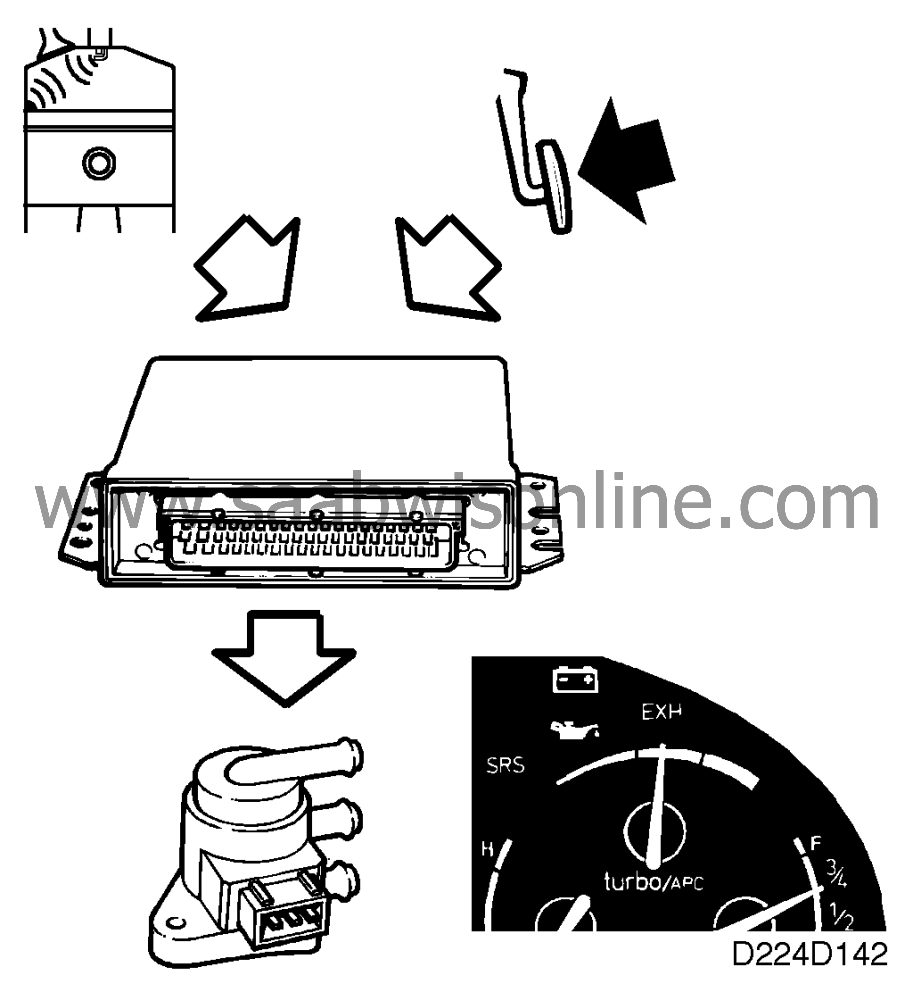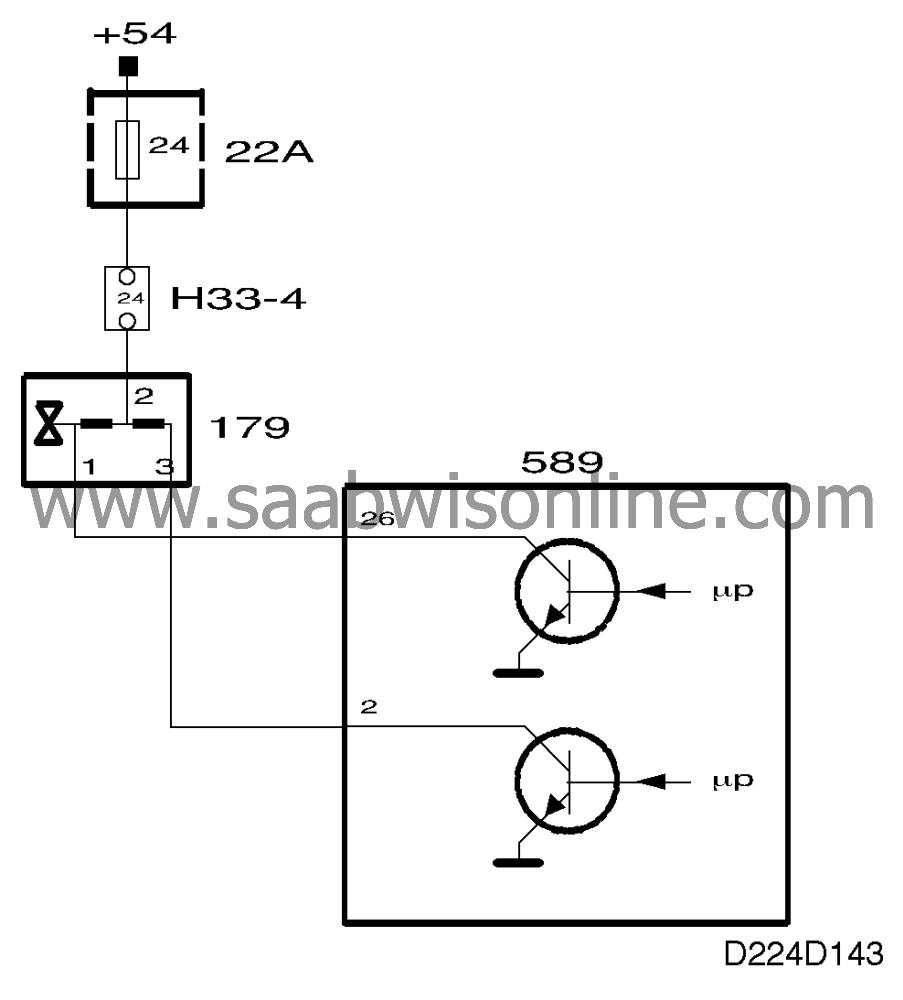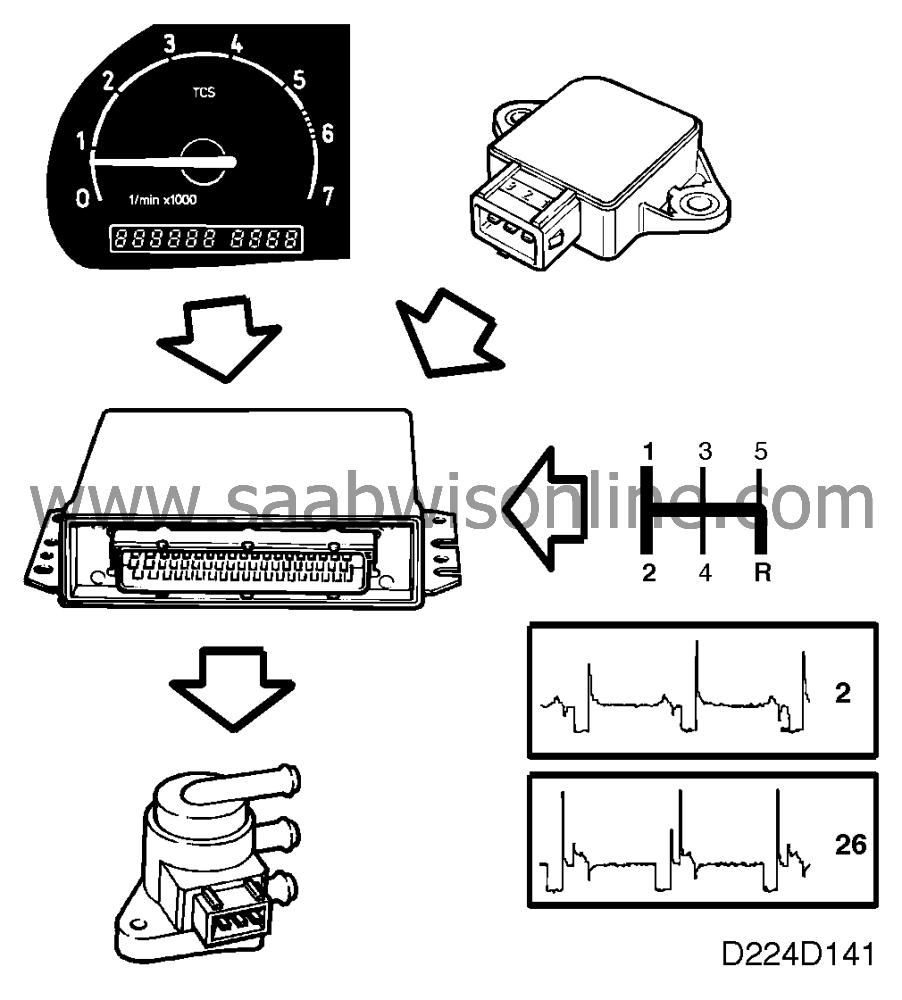Boost pressure control
| Boost pressure control |
The solenoid valve is supplied with power (+54 circuit) via fuse 24 and controlled from pins 26 and 2 of the control module. The PWM control voltage has a frequency of 90 Hz below 2500 rpm and 70 Hz above 2500 rpm. The change in frequency at 2500 rpm is to avoid resonance in the air hoses.
The ECM adjusts the boost pressure by alternately grounding pins 26 and 2. As a result of grounding pin 2 a longer time than pin 26 the boost pressure is reduced, and conversely the boost pressure is increased by grounding pin 26 longer than pin 2.
The ECM determines the boost pressure depending on throttle position and engine speed. The ECM reads off the current boost pressure using the manifold absolute pressure sensor. The boost pressure is reduced slightly in 1st, 2nd and reverse gears. The ECM calculates the gear position by comparing the car's speed with the engine speed.
If the ECM has been de-energized, a number of full-throttle accelerations will be needed to obtain a correct build-up of boost pressure.
If knocking occurs, despite retarding the ignition and making the fuel/air mixture richer, the boost pressure is also reduced.
If there is a break in any of the leads to the solenoid valve, basic boost pressure will be obtained.
If there is a break in any of the hoses or if there is a fault on the solenoid valve, excessively high boost pressure may be obtained. The ECM will then stop fuel injection at approx. 1.15 bar.





